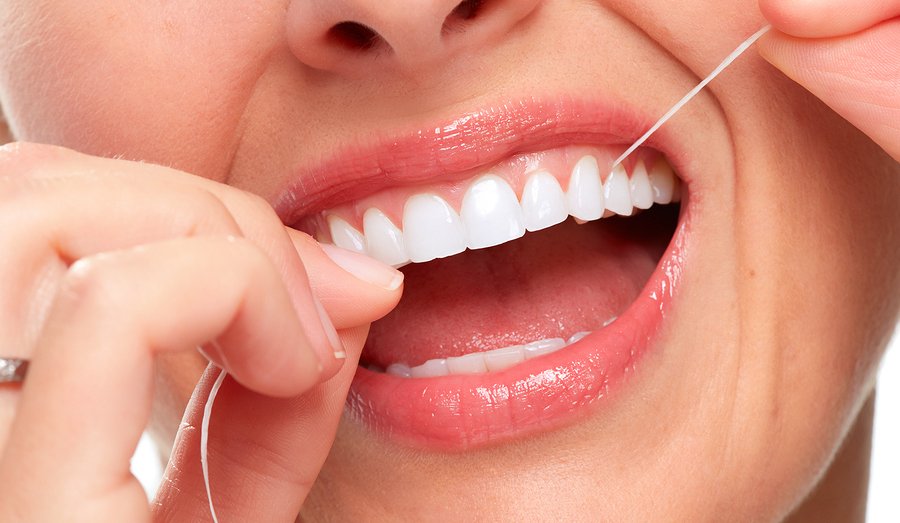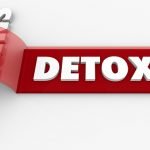Taking care of your oral health is very important, both to maintain your nice smile and because it can impact your overall health. As part of your routine, you probably brush your teeth at least twice a day and floss at least once a day to remove any debris that your toothbrush can’t reach. While any dentist will tell you that’s exactly what you need to do to keep your teeth and gums in good shape and disease free, new research suggests that—depending on the products you use—you might be doing more harm than good.
The study, which was conducted at the Silent Spring Institute in Newton, Massachusetts, found that one popular brand of dental floss may provide exposure to dangerous chemicals called perfluorooctanesulfonic acids (PFAS).1 Boronow, Katherine E.; et al. “Serum concentrations of PFASs and exposure-related behaviors in African American and non-Hispanic white women.” Journal of Exposure Science & Environmental Epidemiology. 8 January 2019. Accessed 16 January 2019. http://www.nature.com/articles/s41370-018-0109-y#Sec13. These results are based on an investigation that included 178 middle-aged women tested for PFAS levels in their blood, as well as an evaluation of numerous dental floss products.
Blood was drawn from each of the subjects and analyzed for the presence of 11 types of PFAS chemicals. The participants were also interviewed about various behaviors that might cause PFAS exposure, including using dental floss, eating fast food meals, and using items with stain-resistant treatments. After evaluating the resulting data, the researchers discovered that the volunteers who reported using Oral-B Glide products for flossing had higher levels of a specific PFAS compound known as perfluorohexanesulfonic acid (PFHxS).
To ensure that there was no coincidence, the investigators then tested 18 different dental flosses for the presence of these chemicals using particle-induced y-ray emission spectroscopy. All three types of Oral-B Glide floss were among those assessed, and all three were found to contain fluorine, which is a marker of PFAS.
While the study is somewhat limited by its small size, it is difficult to deny the presence of chemical markers indicative of PFAS on the products as well as elevated levels of PFAS in the women who used them—which, apparently, is exactly what Oral-B did. Now, in the interest of full disclosure, in a statement to USA TODAY, Oral-B said it didn’t find any of the substances in the study in its floss.2 Ryan W. Miller. “Oral-B Glide floss tied to potentially toxic PFAS chemicals, study suggests.” USA TODAY Jan. 9, 2019. (Accessed 17 Jan 2019.) http://www.usatoday.com/story/news/nation/2019/01/09/oral-b-glide-floss-toxic-pfas-chemicals-study/2530661002/ That said, why would a chemical such as PFAS be used in a product like dental floss? These man-made chemicals are added to many consumer goods, such as non-stick cookware, fast food containers, and fire-retardant materials because they are water resistant, stain resistant, and reduce friction.
But PFAS has been linked to many health issues through the years, including kidney cancer, testicular cancer, thyroid disease, fertility problems, and immune system disorders. And these chemicals persist indefinitely in the environment and accumulate over time in our bodies. In fact, studies have detected the presence of fluorinated chemicals in blood samples of 98 percent of adults and children.
The good news, in the case of the current study, is that the Oral-B Glide Products were the only flosses tested that appeared to contain PFAS. So, you don’t have to give up on flossing to avoid exposure to these toxic chemicals if you’re using an Oral-B product; simply changing the type of floss should be adequate. But, since not every type of floss made by every manufacturer was evaluated, it might be smart to avoid any that promote themselves as gliding or sliding easily between the teeth, or any that compare themselves to Oral-B. It is likely that the PFAS precursor chemicals are used to reduce friction as we slide the floss up and down, which might make a nicer flossing experience but is clearly not worth the potential exposure on the hands or in the mouth. In any case, a search on Amazon for “chemical free dental floss” will provide a number of alternatives.
If you’ve been using Oral-B Glide to faithfully floss your pearly whites every night for years now, don’t worry too much. Unfortunately, PFAS chemicals are so ubiquitous that you would have certainly been exposed to them elsewhere if not through your floss. So, switch the type of floss you use, but don’t give up on your home dental care because poor oral health has been linked to a number of diseases, including esophageal cancer, HPV, and pancreatic cancer.
References
| ↑1 | Boronow, Katherine E.; et al. “Serum concentrations of PFASs and exposure-related behaviors in African American and non-Hispanic white women.” Journal of Exposure Science & Environmental Epidemiology. 8 January 2019. Accessed 16 January 2019. http://www.nature.com/articles/s41370-018-0109-y#Sec13. |
|---|---|
| ↑2 | Ryan W. Miller. “Oral-B Glide floss tied to potentially toxic PFAS chemicals, study suggests.” USA TODAY Jan. 9, 2019. (Accessed 17 Jan 2019.) http://www.usatoday.com/story/news/nation/2019/01/09/oral-b-glide-floss-toxic-pfas-chemicals-study/2530661002/ |











